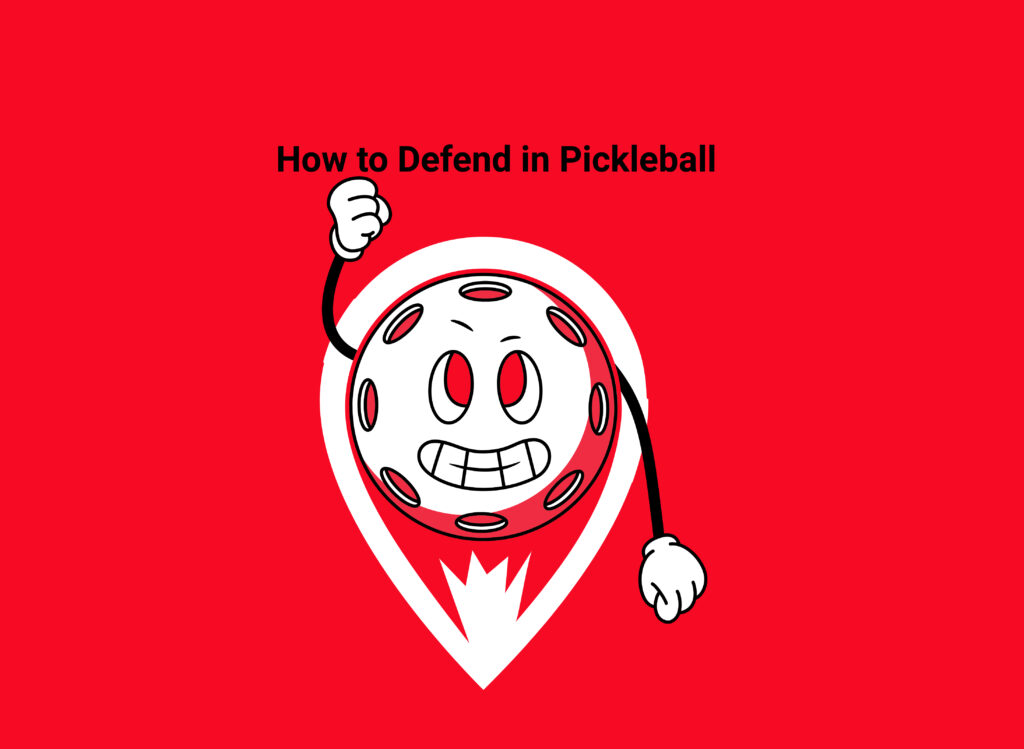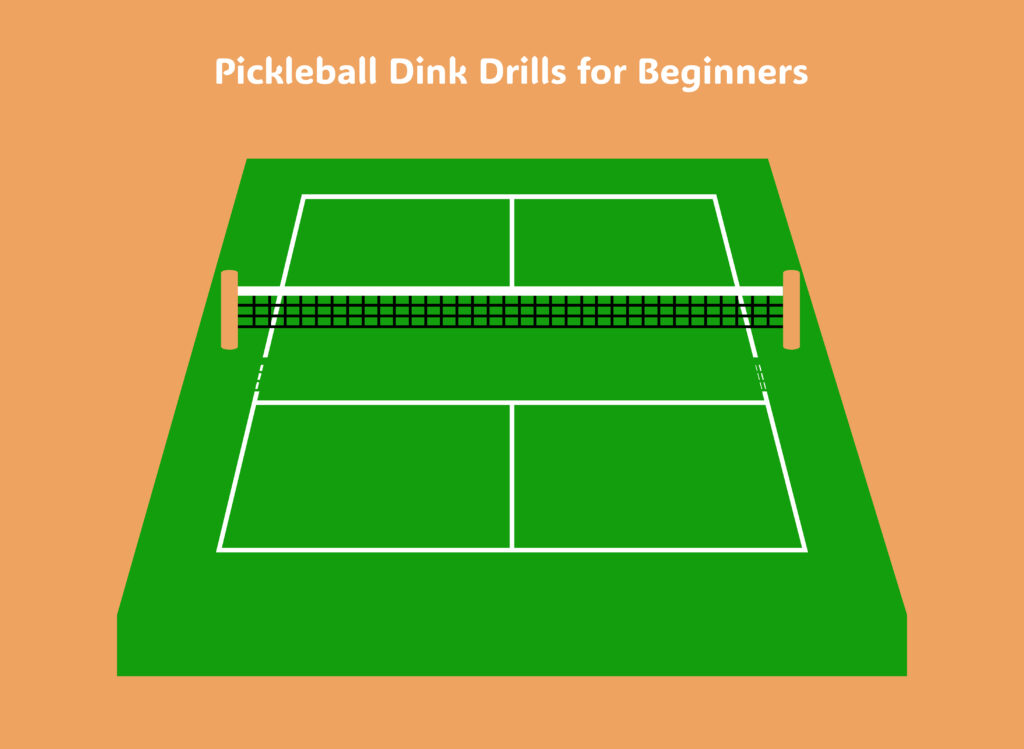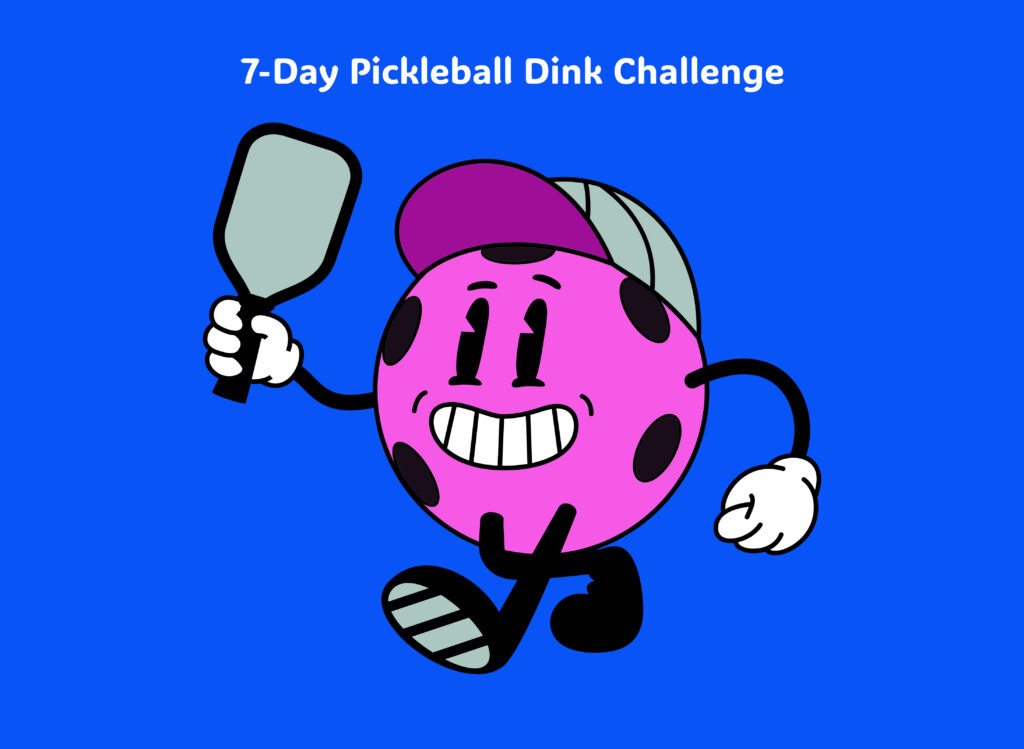- Ways to Defend in Pickleball and Win Points
- Defending for Beginners: Stay Calm, Stay Low, and Reset
- Intermediate Defence: Position, Timing, and Tactical Patience
- Advanced Defence: Disruption, Disguise, and Flipping Momentum
- Training Defence: Drills and Reps for UK Club Players
- Final Thoughts: Defence Wins Points—and Matches
Ways to Defend in Pickleball and Win Points
Defend in Pickleball and change your game! When you are defending in pickleball you need anticipation, positioning, and control. Whether you’re on the back foot in a fast-paced rally or trying to stay afloat during a flurry of net attacks, defence is a skill that can win games just as much as offence can. Many players mistakenly see defence as the weaker side of the game. In truth, great defenders don’t just survive—they frustrate, outlast, and eventually turn the tables on their opponents.
Pickleball defence isn’t passive—it’s a strategy. Knowing how to reset hard shots, slow the pace, and rebuild your position gives you more opportunities to win points and less risk of gifting them away. Whether you’re a total beginner or regularly battling in the Kitchen during league play, learning how to defend properly will make you a smarter, tougher, and far more complete player.
Defending for Beginners: Stay Calm, Stay Low, and Reset
For beginners in the UK, defending often feels like chaos. You’re on your heels, the ball’s coming fast, and instinct says to swing hard or panic. But the first skill to learn in pickleball defence is resetting—turning a fast, aggressive shot from your opponent into a soft, controlled ball that lands in the Kitchen. The goal? Slow the game down, regain positioning, and take away their advantage.
Beginner Defence Basics:
✔ Stay low and balanced—bend your knees, not your back.
✔ Keep your paddle out front, between chest and waist height.
✔ Practise the soft reset—angle your paddle to gently absorb speed and land it in the Kitchen.
✔ Let fast shots come to you—don’t reach or swing wildly.
✔ If you’re stuck near the baseline, focus on a controlled third shot drop or reset instead of returning fire.
Many UK clubs now include defence drills during group sessions. These often involve one player at the net driving the ball, while the defender practises absorbing pace and dropping it softly. Done correctly, this builds control and confidence. The idea is to make your opponent work harder for their next shot—while you stay calm and recover your footing.
🔥 Key takeaway: For beginners, defence is about staying composed under pressure and using resets to rebuild the rally.
Intermediate Defence: Position, Timing, and Tactical Patience
At the intermediate level, players know how to reset—but now the focus shifts to when to reset, when to block, and when to counter. UK players at this stage often face better opponents who hit harder, move faster, and know how to exploit weaknesses. That’s why positioning becomes crucial. You need to learn how to anticipate the attack and move before the ball lands.
Intermediate Defence Tactics:
✔ Use a split step before your opponent hits—this keeps you ready to move.
✔ Keep your feet moving—don’t get stuck flat-footed at the baseline or Kitchen.
✔ Practise drop volleys and low blocks from the transition zone (the “no man’s land”).
✔ Learn to read your opponent’s paddle face—this gives you clues about the shot type.
✔ Avoid panic flicks—if the shot’s too low or fast, reset and recover instead.
One great UK club drill is the “transition defence” drill: one player stays in the mid-court, defending quick volleys and learning to decide when to reset or block. This helps players stay calm during attacks and sharpens footwork and paddle control.
🔥 Key takeaway: Intermediate defenders must master timing and footwork—good positioning allows you to neutralise even the best attacks.
Advanced Defence: Disruption, Disguise, and Flipping Momentum
At advanced level, defence becomes far more strategic and psychological. You’re no longer just surviving—you’re baiting your opponent into overplaying and using their own aggression against them. Top UK players understand that defence is the best way to flip the rhythm of the rally—a reset followed by a soft dink, followed by a sudden counterattack.
High-Level Defensive Tools:
✔ Use spin and arc on resets to throw off timing.
✔ Master the low, angled block—great for redirecting drives cross-court.
✔ Disguise your resets—make them look like you might flick, then drop instead.
✔ Practise fast transitions—reset, move forward, and be ready to attack.
✔ Recognise patterns—if your opponent always attacks cross-court, sit on it and counter.
Advanced UK defenders often train using two-player drills that simulate attack sequences. One feeds hard balls, the other resets three times and finishes with a counter or speed-up. This reflects real match conditions and builds confidence in pressure moments.
🔥 Key takeaway: At high levels, defence is about controlling chaos—using subtle tactics to regain control and strike back with purpose.
Training Defence: Drills and Reps for UK Club Players
Defensive skills don’t improve through match play alone—you need focused, repeated practice. Fortunately, most UK clubs now incorporate defence-focused drills that can be tailored to any level. Whether you’re working on soft resets or counter volleys, the key is repetition with feedback.
Defensive Drills That Work:
✔ Reset-to-Net Drill – One player feeds fastballs, the other resets and advances.
✔ Drop Volley Drill – From mid-court, work on soft touches into the Kitchen.
✔ Fast Hands Block Drill – Volley-to-volley with emphasis on calm blocks and reaction time.
✔ Corner Reset Drill – Practise absorbing pace from angled drives.
✔ Footwork Shadow Drill – Combine lateral movement and paddle control without a ball.
Many players in the UK also use walls or rebounders at home to practise reset shots under pressure. Visualising defensive situations—and rehearsing the right response—turns panic into instinct. It’s not about being flashy—it’s about being rock solid when the heat is on.
🔥 Key takeaway: Defence is a skill like any other—train it intentionally and often to make it your secret weapon.
Final Thoughts: Defence Wins Points—and Matches
Pickleball is often thought of as an attacking game, but anyone who plays at a high level knows: defence is where the battle is won. The ability to reset, absorb pressure, and keep your cool is what builds momentum, turns matches around, and keeps you competitive no matter the level.
Key Takeaways:
✔ Beginners should focus on resets and staying calm under pressure.
✔ Intermediates must master positioning and shot selection in defensive rallies.
✔ Advanced players use disguise, angles, and rhythm to turn defence into attack.
✔ Drills and reps build confidence—especially in chaotic, fast-paced situations.
✔ In UK pickleball, great defenders are always feared and respected.
👀 Enjoyed this read? Fancy levelling up your game even more? Keep reading Dink Quest for the best pickleball tips, drills, and news in the UK!
🎯 Check out these popular posts next:
📬 Subscribe to the Dink Quest newsletter to Stay in the Loop and be the first to get new blog posts, UK pickleball news, tips, player spotlights and exclusive offers
👉 Click here to subscribe now
Get discounts and exclusive offers for Paddles, clothing and accessories from our shop
We’ve got plenty more where that came from! Whether you’re working on your third shot drop, curious about dinking strategies, or just figuring out how to hold your paddle without it flying across the court we’ve got you covered.
👉 Keep reading, keep learning, and keep dinking smart. Let’s grow the game together, one dink at a time. 💚
See you on the court!
The Dinkquest Team UK 🏓



